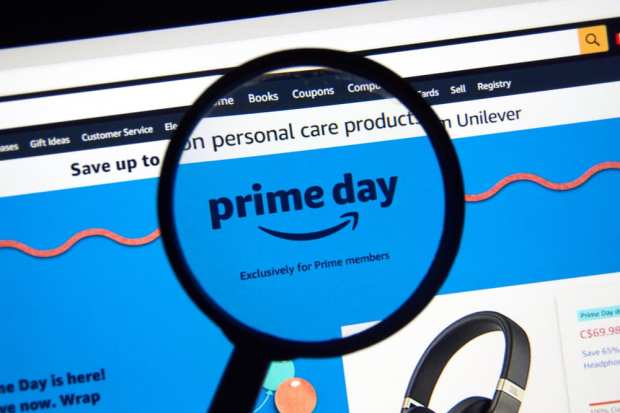Whole Paycheck Tracker: How Prime Was Amazon Prime Day?

The ultimate quest for the whole U.S. paycheck just might have been the week of Oct. 13. It was the week of Prime Day (13-14), Walmart sales events (all week) and Target’s fall sales events. All of these were times to kick off the holiday selling season and their intention was to pull that whole paycheck into one week of hypershopping. Now the issue turns to whether it took the amount that each company wanted it to take.
For Amazon, casing Prime Day has never been easy. The company keeps specific sales numbers close to the vest. This year, with the event coming later in the year than it did for the previous five, the company chose to release a number, which was the $3.5 billion take from its third-party sellers. That has left the tea leaf readers to find some patterns and their post-Prime analysis is a split decision. Some analysts say the tea leaves point to another record haul for Amazon. Some say there’s room for an argument that says Prime Day might not have matched previous years.
Before laying out the analyst arguments, it’s worth noting that a Prime Day that fell short of last year would be completely understandable. Last year for many Amazon customers, Prime Day was a true event. It was a one-time chance to grab discounts and exclusive products and get all the perks that go with being a Prime member. This year, consumers have been using Amazon like a supermarket during the pandemic. The exclusivity of Prime Day was not as “exclusive” this year. It could be a reason why Amazon chose to spotlight its third party sellers. And let’s not forget. According to PYMNTS data analytics, total sales for Amazon in Q2 2019, which contained Prime Day, were $77.1 billion. This year, with no Prime Day, that number jumped to a still staggering $105.6 billion.
All of which would argue that maybe Amazon is soft-pedaling the results of Prime Day 2020. Or maybe not. On the positive side is Piper Sandler analyst Thomas Champion. According to Barron’s, his most recent research note estimated that Amazon may have outpaced last year and generated as much as $10.6 billion in Prime Day sales, including the third-party sellers. He also estimates that it sold more than 260 million items this year, up from 177 million last year.
“Champion concedes his estimate isn’t a hard number, and assumes a product mix of 66% first-party sales and 34% by third-party sellers,” said the Barron’s piece. “If you assume the mix was closer to the company’s overall worldwide mix of about 50/50, he adds, you would get Prime Day sales in the range of $6.5 billion to $7.2 billion. But he views that estimate as low.”
Truist analyst Youssef Squali agrees with Champion. He believes the available data indicates this year’s event “was a record sales period again for the company.”
Squali bases part of his argument on the third party sales data. The $3.5 billion number, he says, represents a 60 percent bounce from 2019. He also notes however that the pandemic appears to have boosted the amount of sellers on Amazon. “We note that 3rd party unit sales have accounted for 52% of worldwide paid units in the first half of 2020,” Squali said, quoted in Nasdaq.com.
What it all boils down to, says Squali, is that Amazon will post strong results in the fourth quarter.
“As we noted in our preview of Prime Day, eMarketer was estimating 2020 Prime Day to have sales growth of 43% y/y to $9.91B. While still early, but with 60% y/y growth in 3P sales, and accounting for most of the revenue, we believe this performance bodes well for Amazon’s 4Q20 results, which consensus estimates peg at ~28% Y/Y growth today,” Squali said.
And then there’s the other side of the argument. Citi analyst Jason Bazinet noted that Amazon changed the language in its annual prime day wrap-up news release, and did not claim that it was the company’s biggest shopping day ever.
“We don’t want to make mountains out of mole hills,” Bazinet wrote. “We still like Amazon’s stock and the long-term story. However, against a backdrop of heightened investor expectations for robust e-commerce trends, we thought the shift in commentary was noteworthy and may temper [fourth quarter] expectations a bit.”
